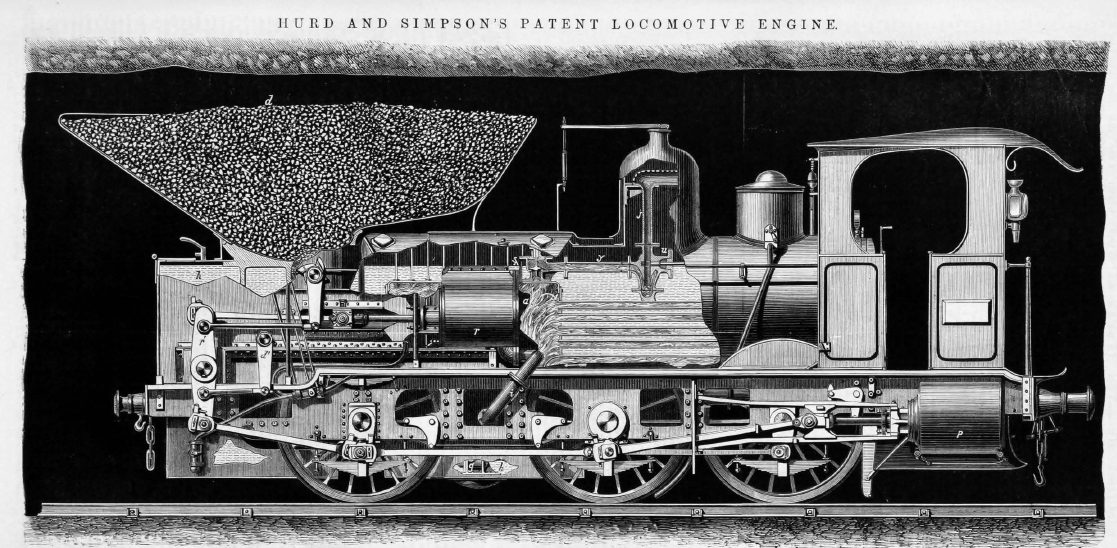Gallery opened: 28 June 2018




The Hurd Locomotive |
Gallery opened: 28 June 2018 |  
|
 | |
Above: The Hurd & Simpson locomotive project: 1874
|
The basic idea behind this design was to take the smoke from the boiler and recycle it through the fire again: "..'the products of combustion from the fire receptacle are returned to the same by means of an injector activated by compressed air... also in devaporising escape or exhaust steam..." which seems to indicate that the inventors thought that continuously recycling the exhaust gases would make them innocuous enough to be released into a confined space like a mine; I am less optimistic. It also appears they planned to condense the exhaust steam.
Here is the naming of parts for image above:
The fire is stoked automatically by the rotary feed barrel under the coal hopper; there is some sort of power-operated shovel feeding the fuel into the fire but it is not visible in the image. Therefore the fire could only be fed when the engine was moving, and it would be fed whether necessary or not; this seems to indicate a lack of knowledge of locomotive operation on the part of Messrs Hurd and Simpson. After this the description of operation becomes incoherent, referring to "...the steam combined with the highly heated and expanded gases escaping through the valve k to the cylinders, or back again into the boiler when the engine is not working." which seems to indicate that the compressed exhaust gases were to be injected into the boiler rather than the firebox, making it an Aero-steam power power plant.
The Hurd & Simpson locomotive was a cab-forward design , the driver looking to the right of the picture. He had no access to the fire. All this recompression of exhaust gases must have been very efficient indeed, because there is no chimney visible at all. Possibly the silliest feature is the huge coal-hopper perched above the locomotive. That would have much raised the centre of gravity, probably making the locomotive unstable, but worse still it is hardly suitable for a locomotive intened to work under ground in a limited headroom. The compressed-air locomotives for mine use showed how to keep a low profile.
Hurd and Simpson were in business making coal-cuttin and compressed-air machinerty. Their company went into liquidation in 1876.
Image and info from The Engineer, for 21 Aug 1874, p153. The index describes it as a Patent Locomotive Engine, but no patent number is given in the article.

  
|